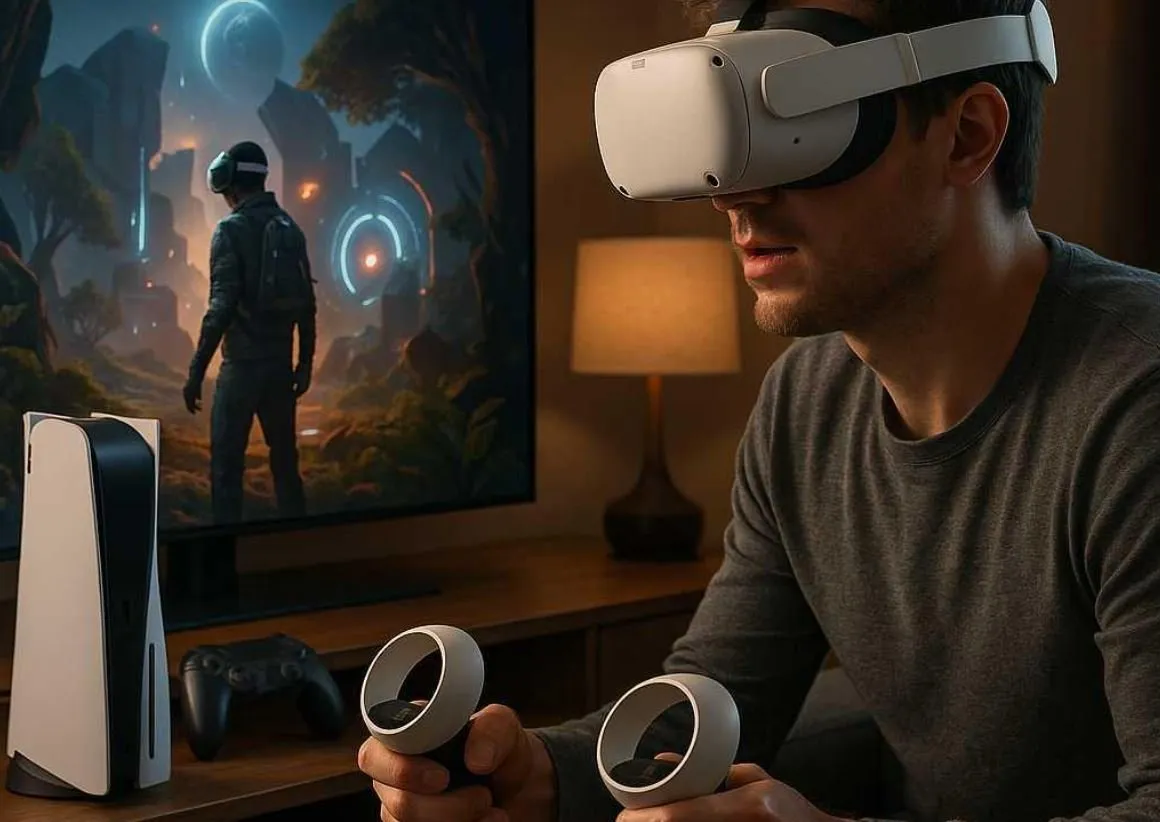The Evolution of Gaming: Virtual Reality and Next-Gen Consoles
The world of gaming is in the midst of a technological renaissance, with innovations in virtual reality (VR) and next-generation gaming consoles leading the charge. As we explore the intersection of these two realms, we uncover powerful trends, emerging markets, and a competitive landscape that promises to reshape gaming as we know it.
The Rise of Virtual Reality in Gaming
Virtual reality has made significant strides since its nascent days in the early 1990s. However, it wasn’t until recent advancements in hardware and software that VR began to gain widespread acceptance among gamers. Companies like Oculus, HTC, and Sony have developed immersive experiences that not only entertain but also revolutionize gameplay.
Market Trends Driving VR Adoption
Several key factors contribute to the rising popularity of virtual reality in gaming:
- Affordability: As production costs decline, VR headsets are becoming more accessible. The introduction of lower-priced devices without significant compromises in performance has attracted a broader audience.
- Innovative Game Design: Developers are embracing the unique capabilities of VR, creating experiences that would be impossible in traditional gaming. Titles like Half-Life: Alyx showcase VR’s potential to immerse players in intricate narratives.
- Community Engagement: Social VR platforms, such as VRChat and Rec Room, allow players to engage with one another in virtual spaces, fostering community through shared experiences.
- Technological Improvements: Enhanced graphics, lower latency, and improved tracking technologies have made VR experiences smoother and more enjoyable, further entrenching them into the gaming experience.
Hybrid Experiences: The Future of Gaming
The concept of hybrid gaming—where traditional gaming experiences blend with elements of VR—represents a significant trend in the industry. Next-gen consoles like the PlayStation 5 and Xbox Series X leverage their powerful hardware to enhance traditional game experiences, while also expanding into the world of virtual reality.
Hybrid VR experiences allow gamers to switch seamlessly between conventional gameplay and immersive simulations, providing flexibility and variety. For instance, console-exclusive titles are increasingly incorporating VR modes, allowing players to dive deeper into their favorite worlds. The upcoming PlayStation VR2 is poised to capitalize on this trend, promising breathtaking visuals and performance, but also ensuring compatibility with existing PlayStation games.
Demand Drivers of Virtual Reality Games
As the gaming market evolves, various demand drivers are paving the way for growth and innovation in virtual reality gaming. Understanding these factors is crucial for both industry leaders and gamers alike.
Increased Consumer Interest
With the gaming community expanding rapidly, there is a heightened interest in new experiences. Younger players, in particular, are drawn to immersive gameplay that engages multiple senses, and VR initiatives are designed to meet this demand.
Technological Advancements
The continuous improvement of VR technology is another significant driver. As Graphics Processing Units (GPUs) and Central Processing Units (CPUs) become more powerful, the potential for richer and more complex experiences increases. The incorporation of features like haptic feedback and advanced motion tracking adds depth to the virtual experience.
Fitness and Wellness
Many VR games promote physical activity, tapping into the growing trend of fitness gaming. Titles like Beat Saber and Supernatural provide players with a workout while maintaining the fun of gaming. This crossover appeal increases the demographic of potential players beyond traditional gamers.
Competitive Landscape of Virtual Reality Gaming
The competitive landscape in the VR gaming industry is becoming increasingly crowded. Major players are jockeying for position while also attempting to carve out unique offerings:
Key Players
- Meta (Oculus): With Oculus Quest 2 leading the charge in standalone VR headsets, Meta aims to blend social interactivity with immersive gameplay.
- Sony: As the producer of one of the most popular gaming consoles, Sony is heavily invested in the VR space with its PlayStation VR hardware and exclusive game titles.
- Valve: Known for its PC gaming platform, Steam, Valve also produces the high-end Valve Index, setting the standard in high-fidelity VR gaming.
- HTC Vive: This industry pioneer focuses on room-scale tracking and delivers premium VR hardware, catering to both gamers and enterprises.
Market Forecast 2025-2032
As we look ahead to the future of virtual reality in gaming, projections indicate significant growth. Market research suggests that the global VR gaming market could exceed $45 billion by 2025, driven by increasing adoption rates and the emergence of hybrid experiences.
Factors such as continued technological advancements, proliferation of VR hardware, and widespread acceptance of VR gaming across various demographics will contribute to this growth. The collaboration between console manufacturers and VR developers will also result in a more robust ecosystem designed to promote user engagement and satisfaction.
The Role of Cloud Gaming
Cloud gaming platforms like Google Stadia and Nvidia GeForce NOW may also play a critical role in the success of VR gaming, especially as they enable players to access high-quality experiences without the need for powerful local hardware. As these platforms mature, hybrid experiences that combine cloud capabilities with VR interactions may redefine accessibility in gaming.
Societal Impact: Features and Inclusivity
As VR technology continues to develop, the potential societal impact cannot be ignored. By promoting inclusivity in gameplay—through adaptive technology, varied representation, and engaging narratives—developers can create a welcoming environment for players from all walks of life.
Moreover, the blending of real-world and virtual experiences might just pave the way for new forms of entertainment, education, and social interaction that we cannot yet fully envision.
Conclusion: The Future is Now
Today’s console generation is indeed poised to reshape the gaming industry in ways that may not initially be obvious. As hybrid VR experiences gain traction and the capabilities of next-gen consoles expand, a new frontier of gaming is emerging. Players can look forward to more immersive, engaging, and innovative experiences in virtual reality, setting the stage for a thriving digital landscape in the years to come.
In summary, with the marriage of VR and console gaming, we are racing towards an exciting future where boundaries dissolve, and new adventures await!







